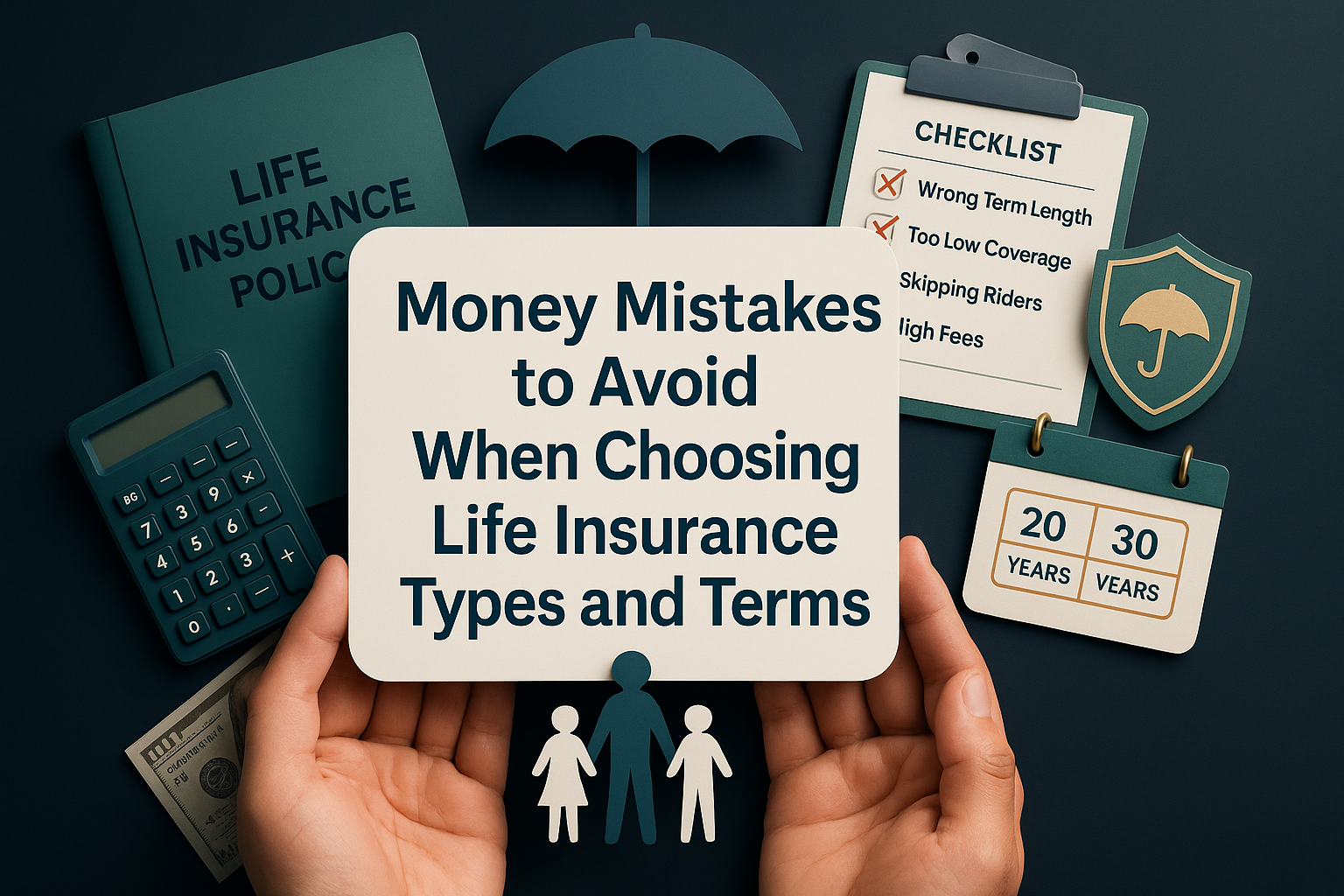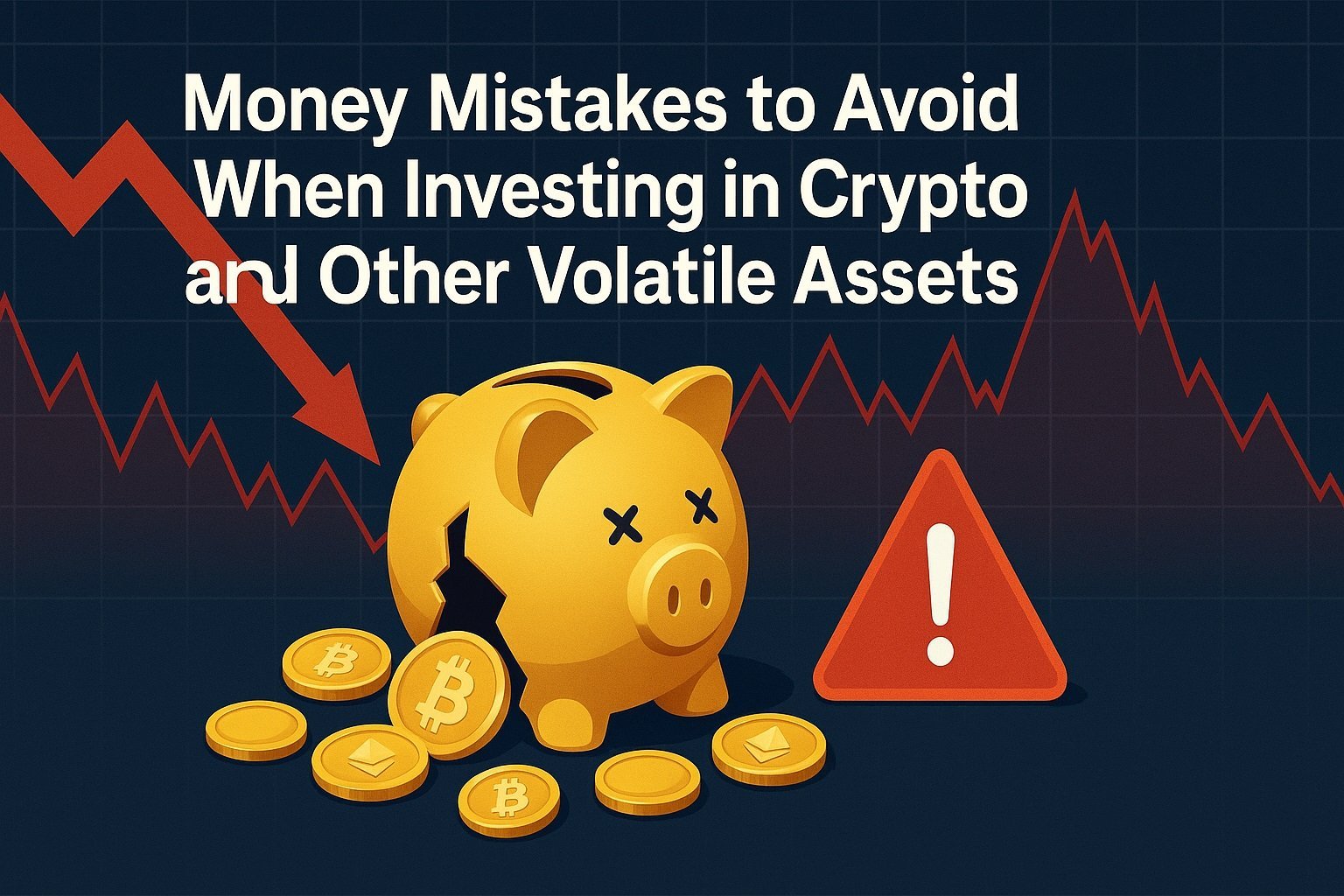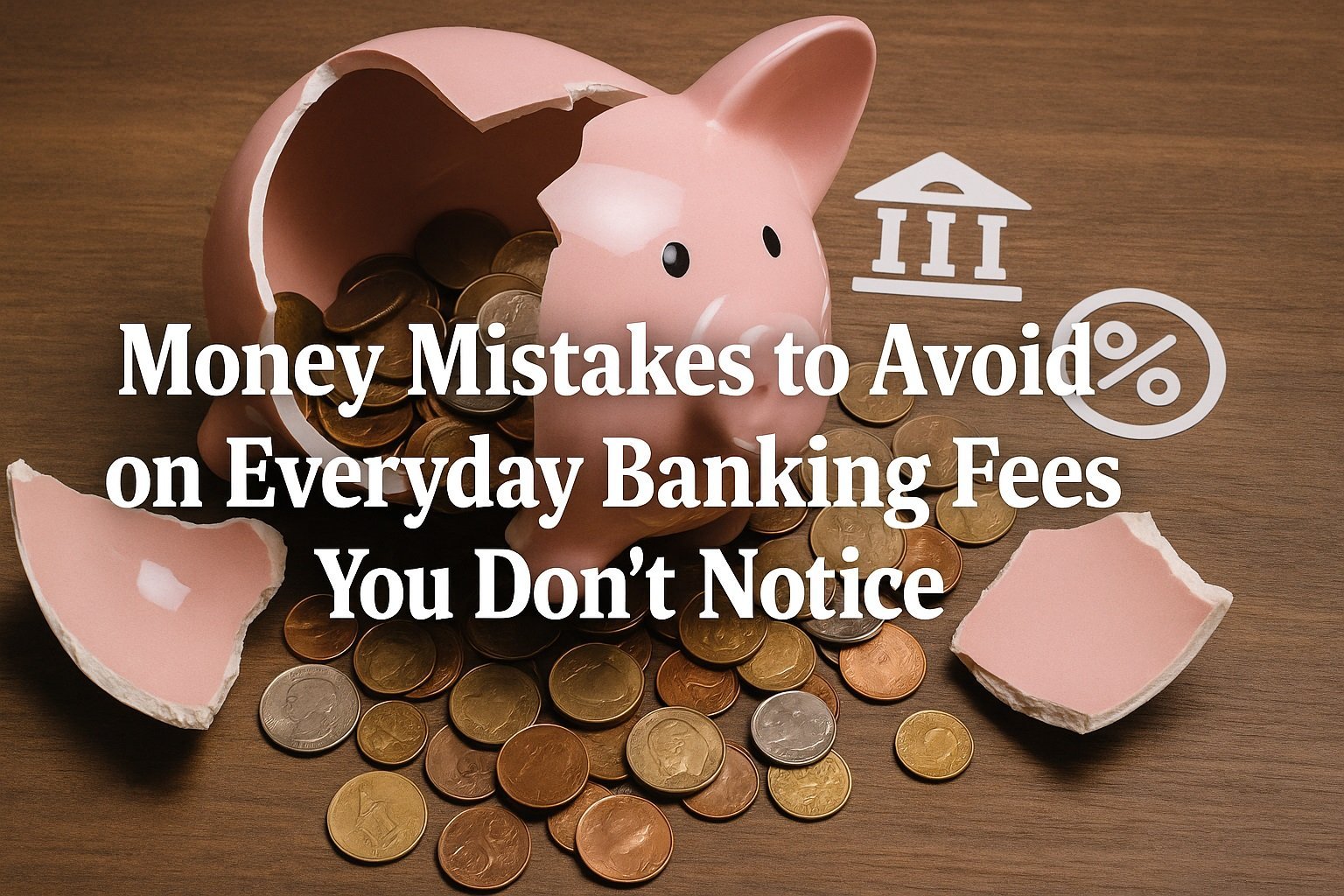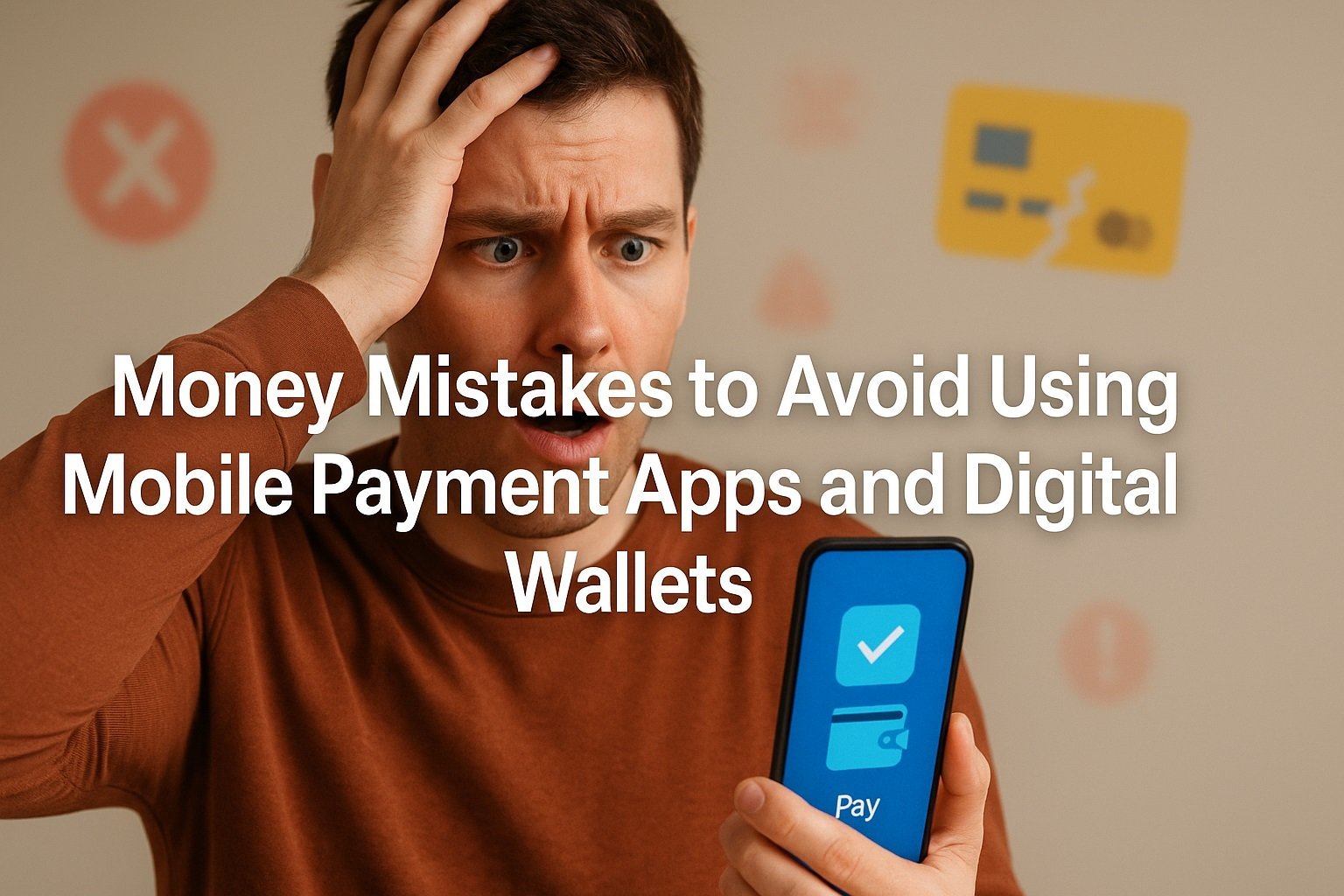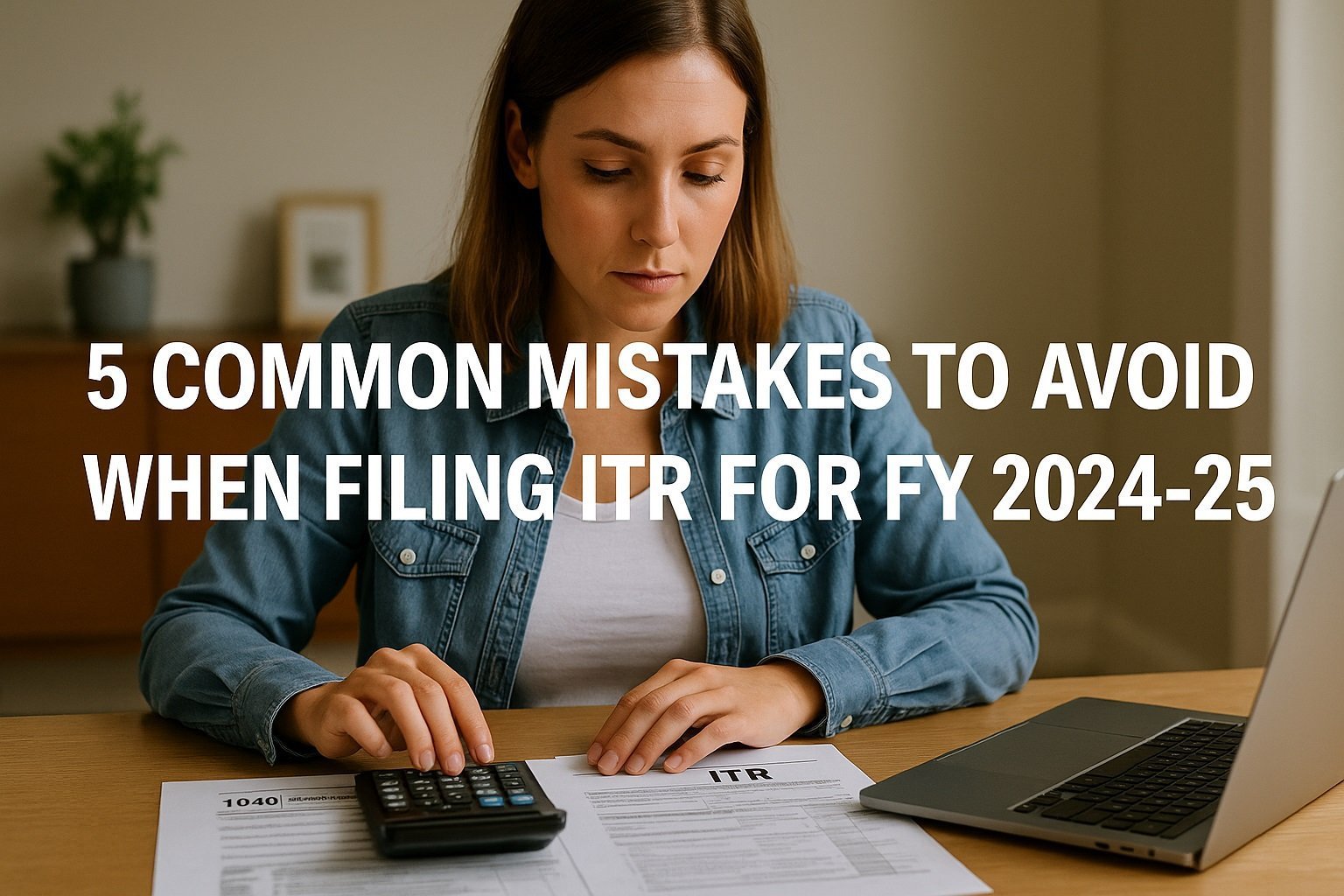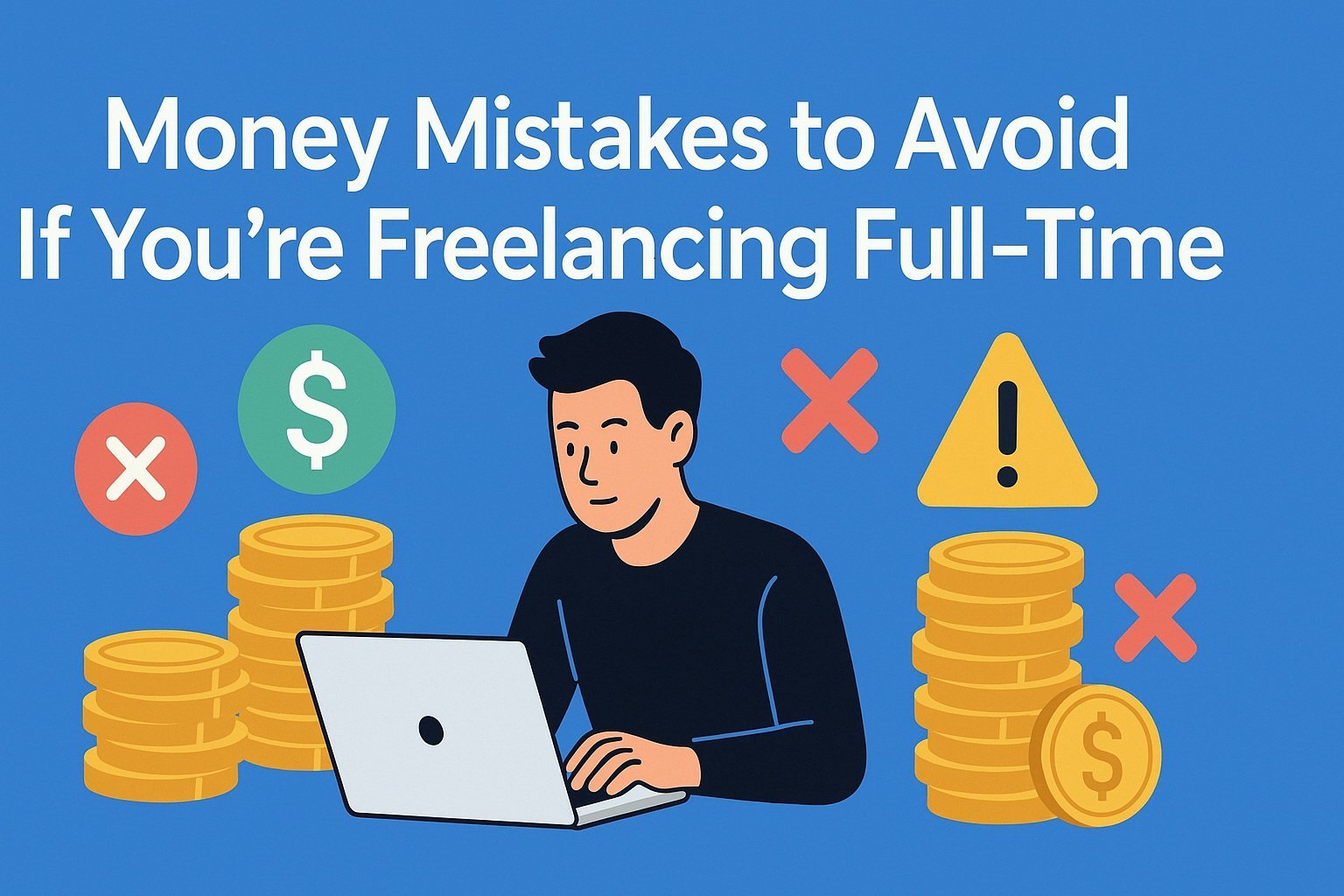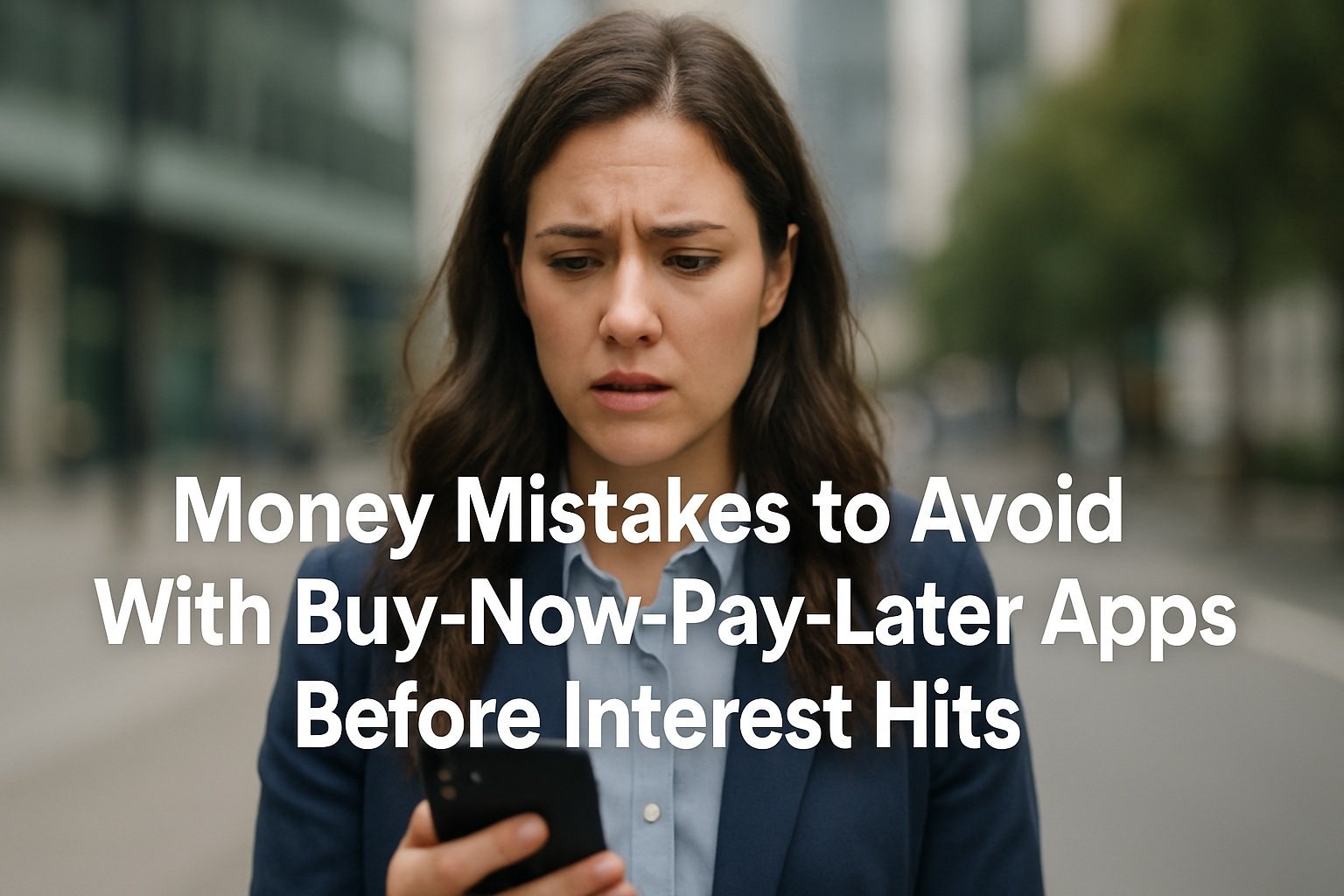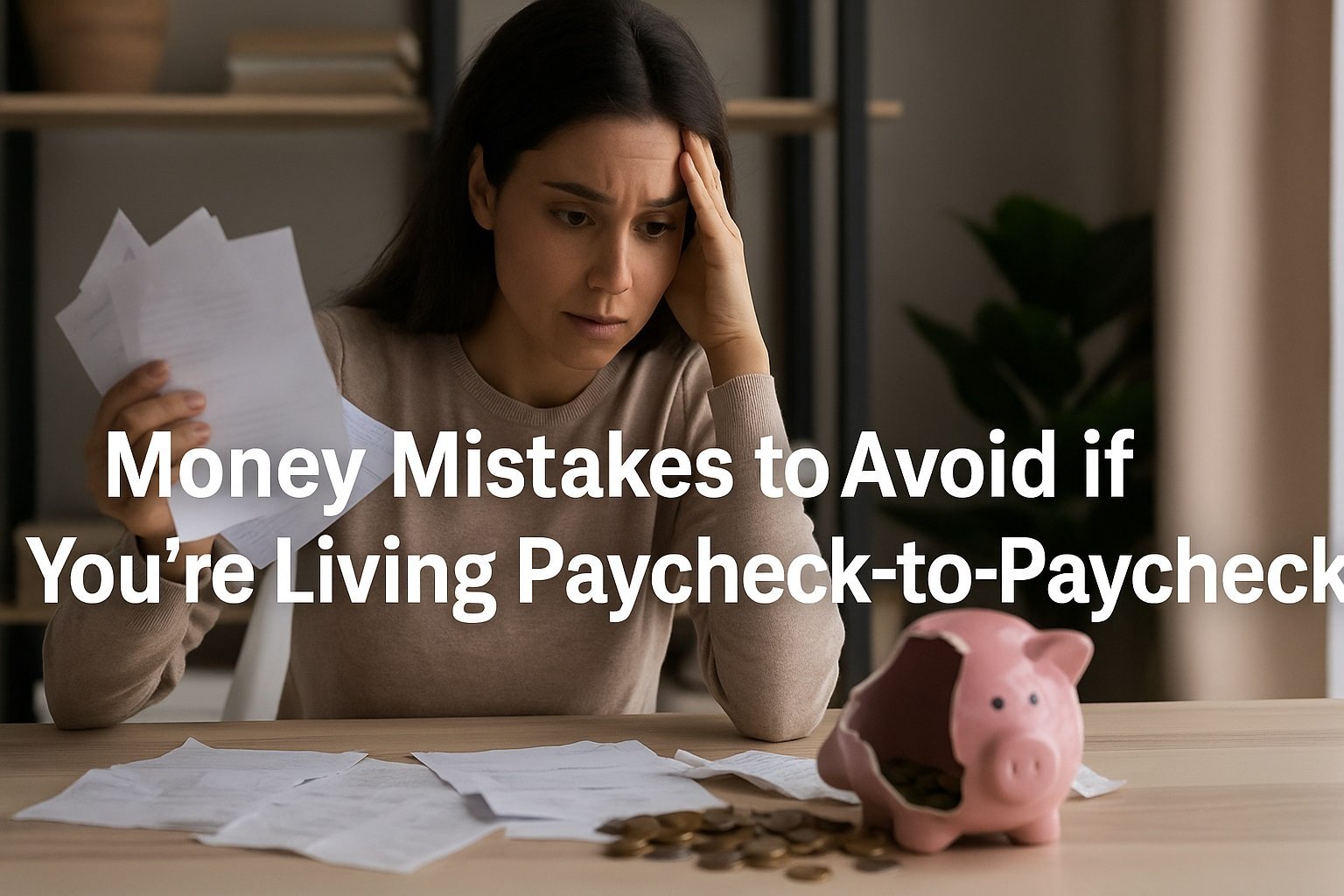
Money Mistakes to Avoid if You’re Living Pay cheque-to- Paycheque – 10 Fixes that Create Instant Breathing Room
Living pay cheque-to-pay cheque means you’re using nearly every dollar you earn to cover bills and essentials, with little or no margin for surprises. It’s more common than you might think—about half of U.S. households find themselves in this exact spot, scrambling to stretch their pay until the next direct deposit. If that sounds familiar, take heart: you’re not alone, and it doesn’t have to stay that way. Over the next few minutes, you’ll learn how to spot the hidden leaks in your spending, free up cash in your very next pay cycle, and start building a modest cushion that keeps you from feeling trapped month after month.
1. Do You Really Know Where Your Money Goes?
It’s impossible to fix what you can’t see. If you’re guessing at where your hard-earned dollars disappear, you’re almost certainly letting cash slip through unnoticed cracks—subscription renewals you forgot, impulse purchases, or fees that add up faster than you realise. That lack of clarity breeds frustration and makes every month a stress test.
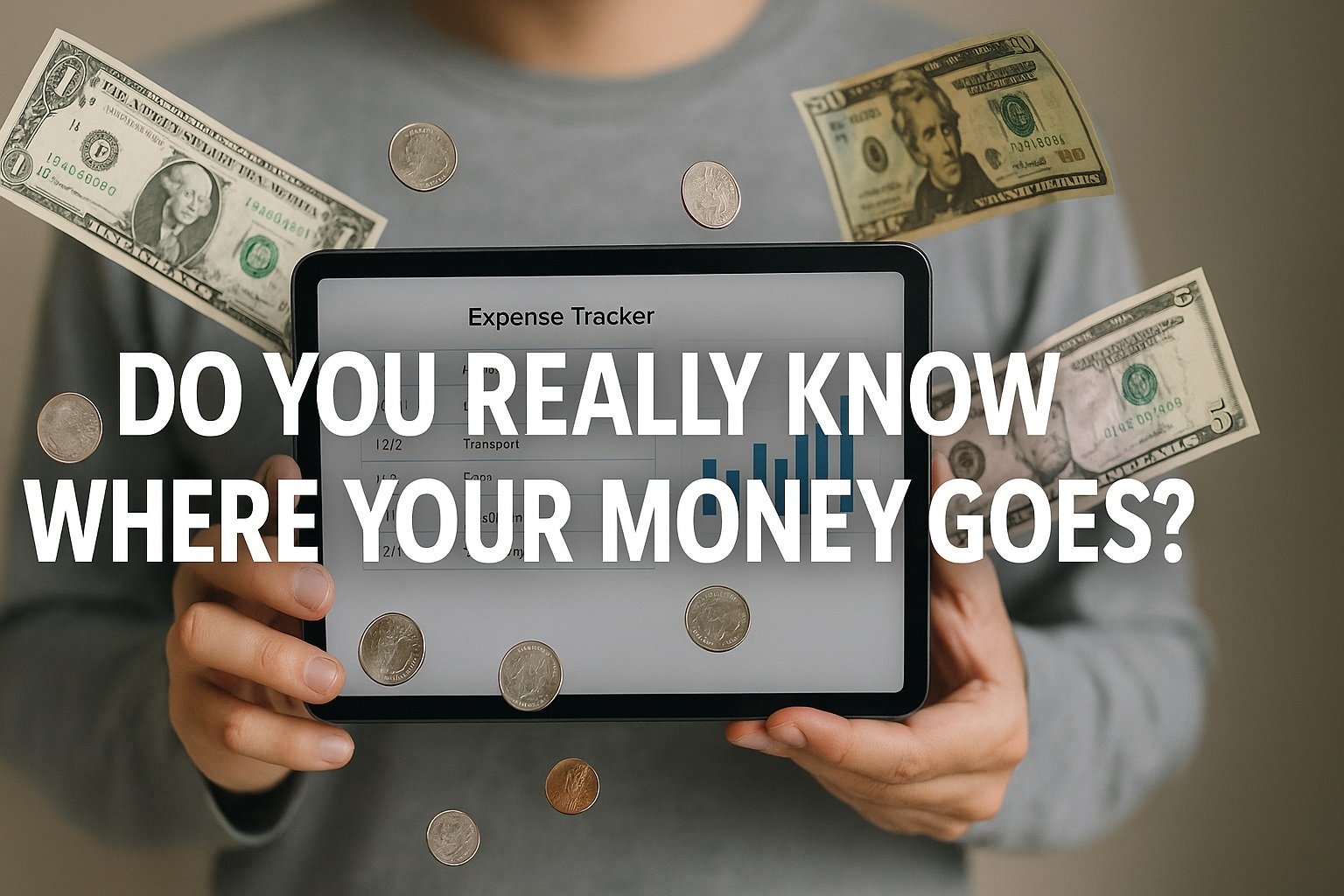
Fix: Build a zero-based or 50/30/20 budget using an app or envelope method
A clear budget is your financial flashlight. With a zero-based approach, every dollar of income is assigned a job—rent, groceries, car payment, fun money—even down to the last dollar, so your income minus expenses equals zero. The 50/30/20 rule is simpler: 50 percent of take-home pay covers essentials, 30 percent funds wants, and 20 percent goes to savings or debt repayment.
| Budget Method | Key Feature |
|---|---|
| Zero-based | Assign every dollar until income minus expenses equals zero |
| 50/30/20 | Split income into 50% needs, 30% wants, 20% savings/debt |
You can set this up in minutes with a budgeting app that links to your bank, or go old-school with cash envelopes for categories like gas, groceries and eating out. At the end of the month, you’ll finally see exactly where every dollar went—and where you can reclaim cash.
2. Skipping an Emergency Fund (Even a $500 Starter One)
When you’re living pay cheque to pay cheque, skipping an emergency fund might feel like saving for a luxury you can’t afford. But without even a small cushion, every unexpected expense—car trouble, medical copay, last-minute flight—forces you to lean on credit cards or high-interest loans. That’s instant interest ticking away, turning a minor hiccup into a financial headache that follows you for months.

Fix: Open a high-yield savings account; automate $10–$25 per pay-period starter transfers
Start by choosing an online bank with a competitive APY so your money grows a little each month. Set up an automatic transfer of just $10 to $25 each pay period—think of it as paying yourself first. Within a handful of pay cheques, you’ll have that $500 buffer, and you’ll sleep easier knowing you’re ready for life’s little curveballs without going into debt.
3. Relying on Credit Cards & ‘Buy Now Pay Later’ for Basics
When you’re scraping by each month, it’s tempting to lean on credit cards or Buy Now Pay Later (BNPL) plans just to keep groceries in the fridge or fill up the tank. But the minute interest and late fees kick in, you’re paying far more than the original price—and BNPL fees can sneak up on you if you miss a payment. Before you know it, you’re trapped in a cycle where essential costs become a debt treadmill.
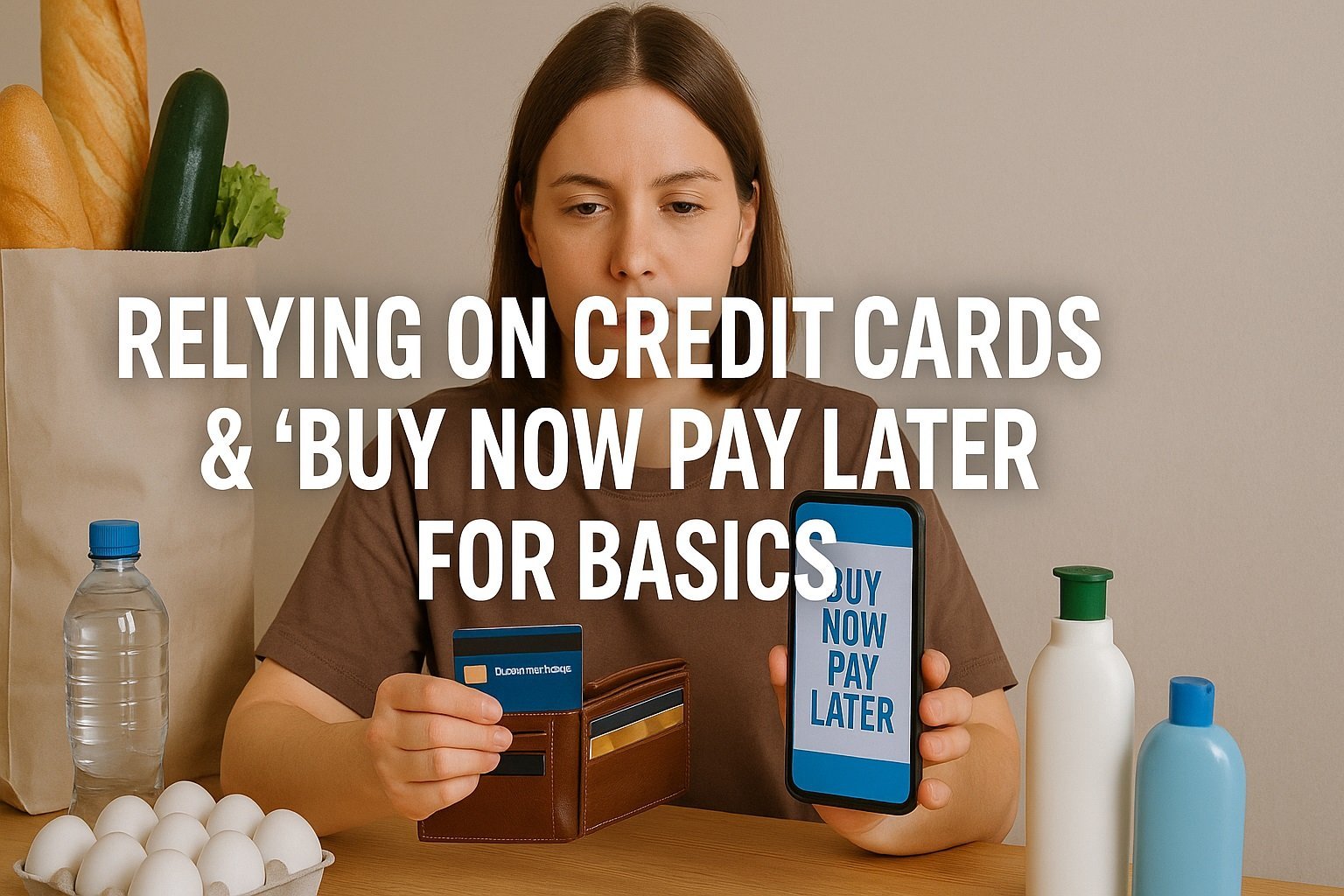
Fix: Prioritise payoff with snowball or avalanche; switch to debit-only grocery rule
Grab control of that debt by picking a payoff strategy that works for your mindset:
| Method | Payment Order | Why It Helps |
|---|---|---|
| Snowball | Pay smallest balance first | Quick wins build momentum |
| Avalanche | Pay highest interest first | Saves most money on interest charges |
-
Choose your strategy. If you need motivation, knock out the smallest balances first (snowball). If you want to minimise total interest paid, target the highest APR accounts (avalanche).
-
Throttle back new debt. For essentials like groceries, switch to debit-only. Load a prepaid or dedicated checking account with your grocery budget each pay period. When it’s gone, opt for budget-friendly meals until the next refill—no interest, no fees.
By pairing an aggressive payoff plan with a strict debit-only rule for basics, you’ll stop digging the hole deeper and start climbing out—one payment at a time.
4. Lifestyle Creep: Letting Raises Disappear
It’s exciting to see your pay cheque tick up after a raise, but if you don’t lock that extra income down, it vanishes into fancier dinners, pricier gadgets, or upgraded subscriptions—and you’re right back to square one. Before long, your baseline spending inflates in sync with your earnings, leaving you no better off than before.
Fix: Pre-commit 50 % of Every Raise to Savings or Debt
Treat every raise like an automatic down payment on your future. The moment your income increases, have half of that bump routed straight into a savings or debt-repayment account. You’ll still get to enjoy the perks of the extra money, but you’ll also guarantee real progress toward financial goals.
| Raise Portion | Destination |
|---|---|
| 50% | High-yield savings or debt payoff |
| 50% | Lifestyle upgrades |
Set up an auto-transfer with your payroll or bank—no thinking required. This way, you reinforce good habits and make sure pay raises translate into long-term security rather than fleeting treats.
5. Subscription & Autopay Trap
When you set it and forget it, those monthly or annual subscription fees quietly chip away at your balance. Before you know it, you could be paying for streaming services you never use, software you replaced, or apps you tried once—and all those “small” charges add up to hundreds each year.
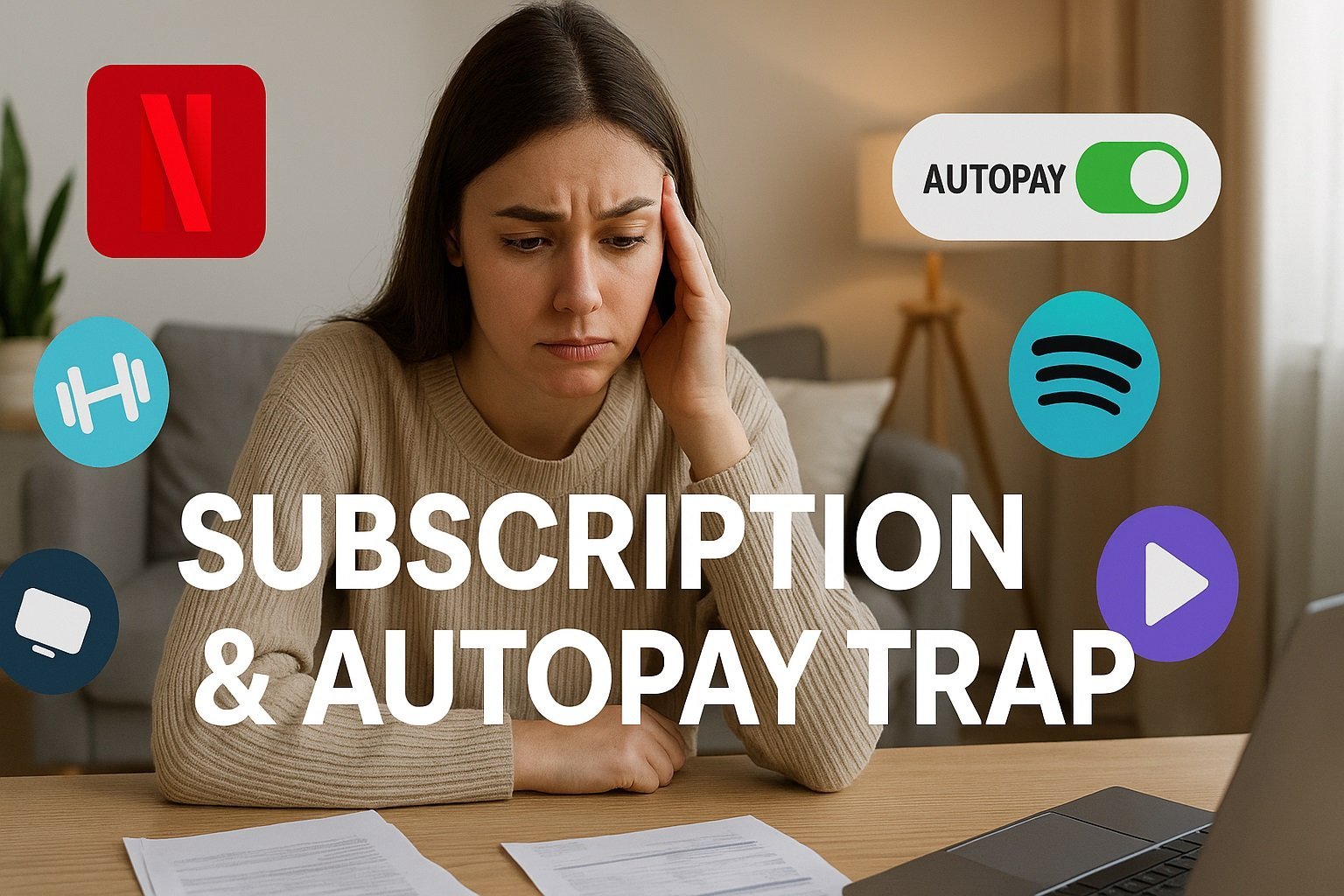
Fix: Quarterly Subscription Audit; Cancel or Downgrade Unused Plans
Every three months, block out 15–30 minutes to comb through your bank and credit card statements. For each recurring charge, ask yourself:
-
Have I used this service in the last month?
-
Is there a cheaper plan or free alternative?
-
Can I share this subscription with a family member to split the cost?
| Subscription Category | Common Examples | Audit Action |
|---|---|---|
| Streaming | Netflix, Hulu, Spotify | Pause, downgrade, or share |
| Productivity Tools | Cloud storage, software | Move to free tier or cancel |
| Memberships | Gym, clubs | Freeze membership or switch to pay-per-use |
Once you’ve identified the low-value plans, cancel or downgrade immediately. You’ll reclaim cash that can be better used toward your emergency fund, debt payoff, or simply boosting your monthly breathing room.
6. Financing Depreciating Assets (New Cars, Gadgets)
It’s tempting to drive off the lot in a brand-new car or upgrade to the hottest gadget on release day. But the moment you sign that financing agreement, you’re locking in a monthly bill that can swallow a big chunk of your budget—and the second you drive home or unbox it, the value plummets. Those payments start to crowd out groceries, utilities, and even your emergency fund, turning what should be a treat into a long-term burden.
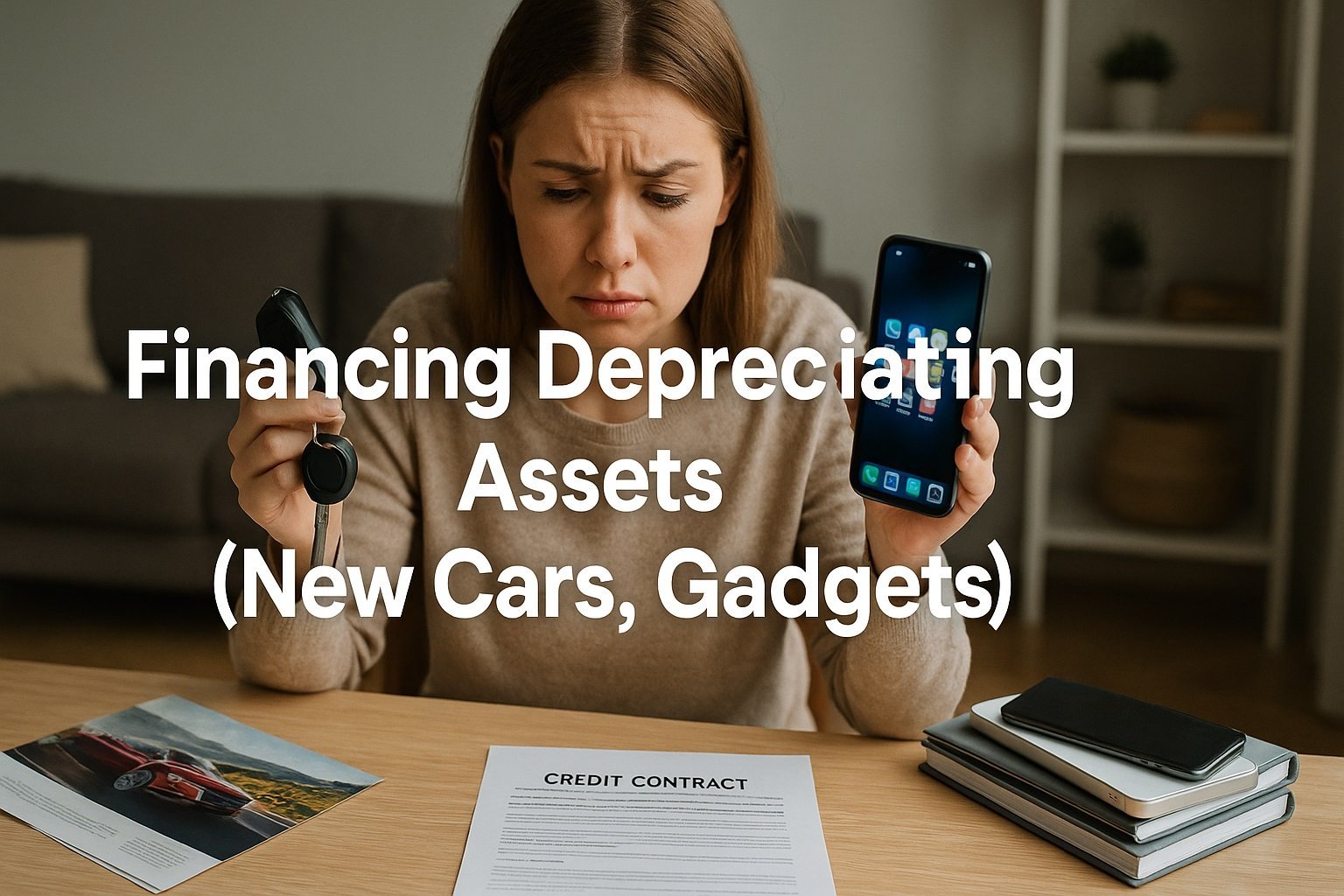
Fix: Keep Vehicles 7 to 10 Years; Buy Quality Used
Instead of chasing the newest model, aim to hold on to your car for at least seven to ten years. That stretches out your investment and lets you avoid the steepest depreciation curve. When you do need a replacement, look for a well-maintained, late-model used vehicle from a reputable dealer or private seller. You’ll still get reliable transportation without the premium cost of first-year value loss. The same goes for electronics: wait for prices to drop after launch, then snap up lightly used or refurbished items. Your wallet will thank you.
7. Raiding or Ignoring Retirement Contributions
It might feel like a jackpot when you pull money from your 401(k) or skip contributions during a tight month, but the reality stings later. You not only lose out on the employer match—which is literally free money—but you’ll also face taxes and penalties if you dip into retirement early. Over time, those missed matches and compounding growth can set you back tens of thousands of dollars, making it much harder to catch up down the road.
Fix: Contribute at Least to Employer Match; Outlaw 401(k) Loans
Make your first retirement goal the employer match. Even if you can’t afford 10 percent of your salary, aim for that match percentage so you’re not leaving money on the table. Then, take any temptation to borrow against your 401(k) off the table—treat loans as forbidden and rely on your emergency fund instead. Automating contributions at hire or raise ensures you pay yourself first and lock in that match without thinking twice.
8. Paying the ‘Stupid Tax’: Late Fees & Overdrafts
When your account balance dips below zero or a payment processes late, you’re slapped with $30 to $40 fees. On a shoestring budget, that feels like money straight into the trash. Those penalties chip away at your already thin margin and can turn one slip-up into a full-blown cash crisis.
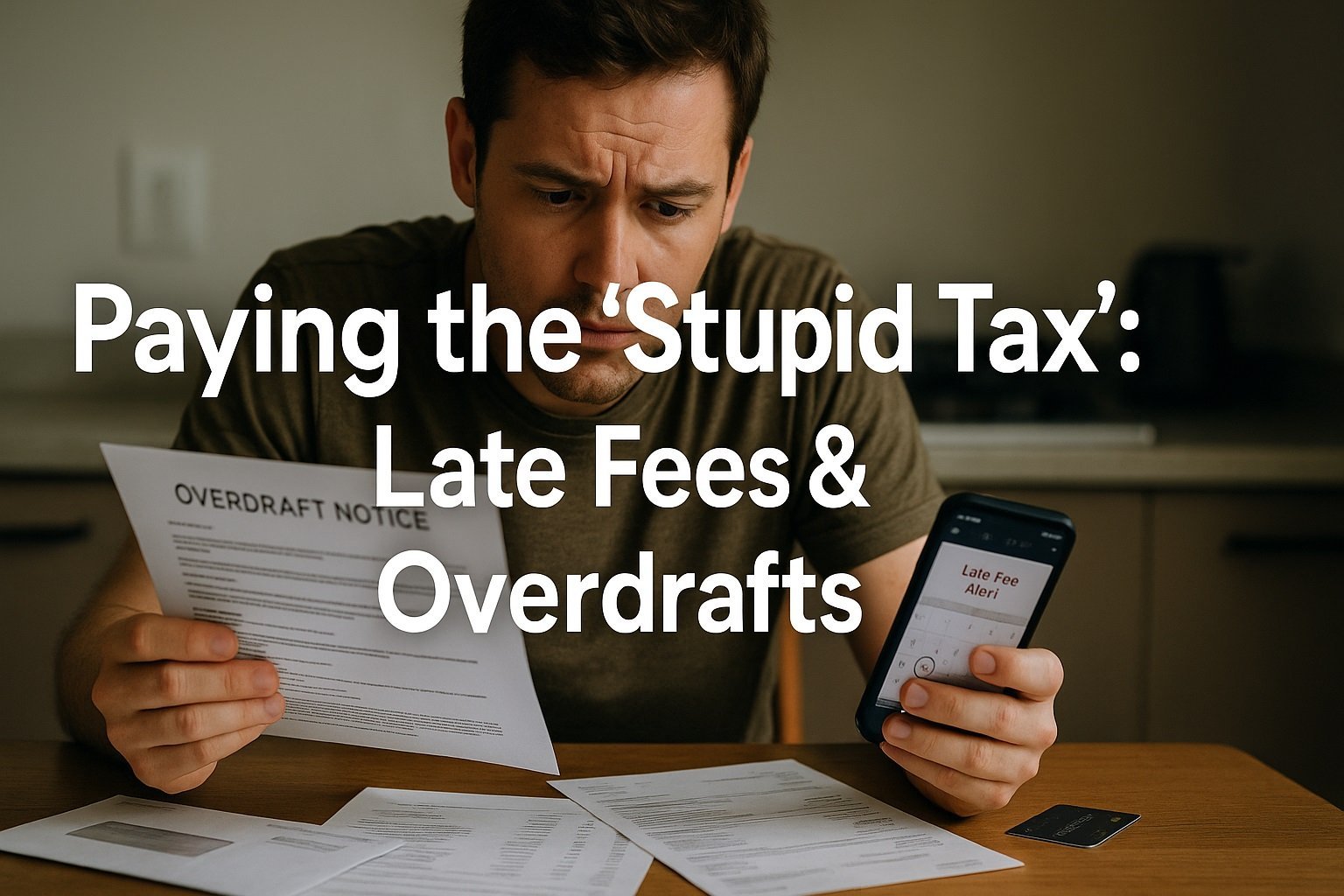
Fix: Activate text alerts; align bill due dates with paydays
Set up low-balance and upcoming-payment alerts by text or email so you get a warning before you incur any fees. Then, call your utility providers, lenders and subscription services to move due dates to just after your pay cheque lands. That way, the money is in your account before bills post, and you sidestep both late-payment and overdraft charges.
| Reminder Type | Benefit |
|---|---|
| Low-balance alert | Gives you time to transfer funds and avoid overdraft |
| Upcoming-payment alert | Prevents missed due dates and late fees |
| Aligned due dates | Ensures funds are available when bills hit |
With alerts in place and due dates synced to your pay schedule, you’ll stop bleeding cash on pointless penalties and keep more of your hard-earned dollars where they belong.
9. One Income Stream in an Uncertain World
Relying on a single pay cheque puts you on shaky ground—lose that job or face reduced hours, and your budget unravels overnight. Building even a small second income stream cushions the blow and keeps essentials covered when your main gig sputters.
Fix: Monetize one micro-side-hustle (freelance, tutoring, deliveries)
You don’t need a full-blown business to get started. Pick one side hustle that fits your schedule and skills, then dedicate just a few hours per week to it. Examples include:
-
Freelance writing or design: Offer a specific service like blog posts or logo tweaks.
-
Online tutoring: Teach a subject you know well in 1-hour sessions.
-
Local deliveries or rideshare: Work evenings or weekends for instant payouts.
By focusing on one hustle, you avoid spreading yourself too thin. Track your hours and earnings in a simple spreadsheet, then reinvest profits into your emergency fund or debt payoff. Over time, that extra flow becomes a reliable backup whenever your main income dips.
10. No Written Plan or Goalposts
Drifting without clear objectives means you’ll keep reacting to money pressures instead of steering toward stability. Without a roadmap, small wins slip by unnoticed and motivation dries up.
Fix: Set one SMART 12-month goal (e.g., “Save $1,000 buffer”) and review monthly
Putting a tangible target on paper transforms vague wishes into achievable milestones. Make your goal SMART:
| Letter | What It Means | Example |
|---|---|---|
| S | Specific | Save $1,000 in a dedicated buffer |
| M | Measurable | Track savings balance each month |
| A | Achievable | $83 per month from budget adjustments |
| R | Relevant | Directly boosts emergency fund |
| T | Time-bound | Complete within 12 months |
Each month, check progress and adjust contributions or expense cuts as needed. Celebrating small wins at 25%, 50% and 75% milestones keeps you motivated. With a written plan and regular reviews, you’ll turn intention into action—and finally gain control over where your money goes.
FAQ – People Also Ask
How do I stop living pay cheque to pay cheque on a low income?
Start by tracking every dollar so you know exactly where your money goes. Plug leaks by cutting or pausing any subscriptions you don’t use, then build a small starter fund of $500 before you tackle debt aggressively.
Should I save or pay off debt first?
Aim to stash $500–$1,000 in a mini emergency fund first. Once you’ve got that buffer, focus on paying down high-interest debt while keeping up with minimums on everything else.
How much of an emergency fund is realistic at first?
Shoot for the net amount of one pay cheque to begin. As you shrink debt and find extra cash, gradually grow that fund until it covers three to six months of expenses.
Are budgeting apps better than spreadsheets?
Apps win on automation and real-time updates, while spreadsheets give you ultimate flexibility. The best choice is simply the one you’ll stick with consistently.
What side hustles work when you have no time?
Look into paid online surveys, quick micro-freelance gigs (like writing short articles or designing simple graphics), weekend delivery or rideshare shifts, or selling things you no longer need. Even small hours can add up.



